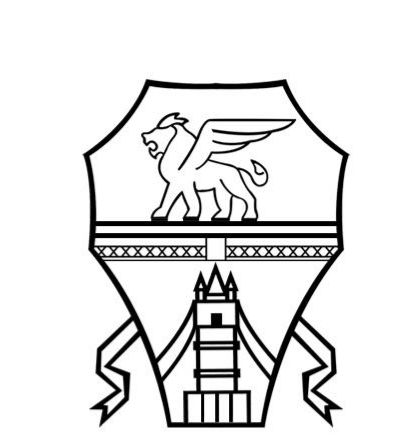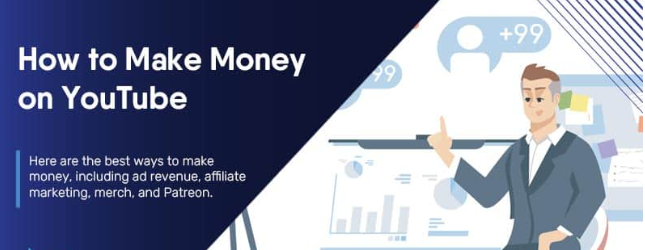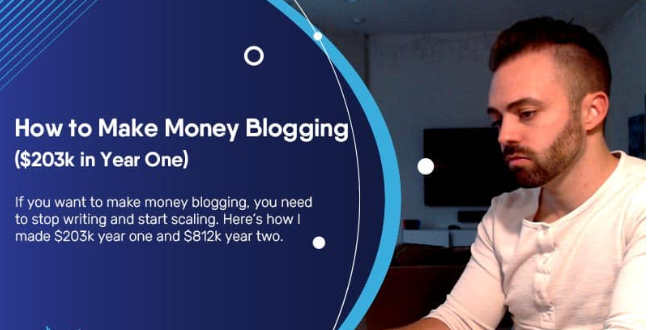SEO: what is it, how does it work and above all what is SEO optimization for? What would the meaning of SEO be? Let’s see it right away.
What is the meaning of SEO?
The acronym SEO (SEO optimization, in English “Search Engine Optimization”) refers to those actions useful to achieve, improve and maintain a good visibility of a content compared to all other similar content on the web for a given query.
How likely is it that a user’s query to a search engine like Google will result in a page (SERP: Search Engine Result Page) where your content is prominently featured? Many if at the base there is a correct SEO activity. Almost nil otherwise.
Why is SEO so important?
My first answer is very simple: to beat the competition .
Do you know how many years the web has been filled with new content every day? For almost thirty years. A very long time for a practically unlimited container. If you want to have any hope of capturing the attention of users who query search engines for specific needs, resorting to SEO techniques is essential. The alternative is to wander the boundless galaxy of the Internet condemned to eternal oblivion.
Using SEO techniques means doing an effective web marketing , whether you intend to sell something, or whether you simply want to share and therefore make sense of the work you have done in creating web content.
The second reason is that SEO is an Inbound promotion channel , that is, it intercepts users at the very moment in which they themselves are actively seeking a solution to some of their problems or questions.
A user searches when he wants; advertisements instead appear even when you are not interested in the sponsored product and when you do not want to be annoyed.
With SEO, which is free, the user himself chooses us among many others.
Why does he do it? Because we are higher in the Google rankings and we better satisfy its search intent: we will most likely have a page with better content than those in a lower position than ours.
How is SEO done?
SEO optimization strategies and practices are many and concern the many aspects of a website, from HTML structure to link management.
Specifically, the SEO activity is mainly divided into two macro-categories areas :
- On-Page SEO
- Off-Page SEO
With the term On-Page SEO we mean the whole set of optimization strategies put into practice within the pages of the site to be positioned in the SERP. This macro-area includes, for example, the SEO optimization of the HTML code and the optimization of the website contents.
The functioning of the famous keywords
This is certainly the first step for proper SEO: focusing on choosing the best key to use. There are technical support tools in this activity, but good reasoning is always the basis of everything. Let’s see why.
Let’s start by saying that a good ranking on Google is not directly proportional to a text filled with too generic keywords , which will certainly have a high volume of searches but also a lot of competition and, therefore, little chance of success.
Not to mention the fact that a text in which the same words are repeated obsessively over and over will certainly annoy the reader.
According to the theory of the long tail ( long tail keywords ), it is preferable to choose specific keywords, with less volume of searches but also less competition and, therefore, with greater conversion rate.
In other words, does a person who is dressed and accessorised according to the dictates of fashion from head to toe stand out more or one who wears something unique and particular, that no one owns or has ever thought of considering? As you can see, the same principles apply in the virtual world as in the real world.
Originality always pays off, but as long as it’s not loud and contrived.
Returning to keywords, you have to be careful where to insert them. Their appearance is absolutely essential and strategic in some elements, such as the Tag Title, the Meta Description, the Tag Heading and the Alt Text of the images.
What are we talking about? Don’t worry: let’s make a small explanatory stop:
- The Tag Title is the code that specifies the title of a particular page to the search engine. In order for it to be optimized, it too must be concise and include keywords. 55, maximum 60 characters will be more than enough. Definitely to avoid screams and sensationalism. Users aren’t stupid.
- The Meta Description is the introductory phrase (snippet) of about 160 characters (actually the measurement is in Pixel) that appears in the SERP under each web address returned by the search engine. Alias a very important card to play to attract the reader and convince him to click on that page and not on the others. But be careful: the Meta Description must be consistent with the content it anticipates, otherwise it is not valid. Pitfalls only work once and are short-lived: pogo sticking will cause you to lose positions.
- The Tag Heading are titles and subtitles (H1, H2, H3…), which help to clarify the content of the page itself to both users and the search engine and lead the user through a fluid and rational reading of the text. They help him to pigeonhole information mentally and also take into account the reading device. A good use of Tag Heading is the joy of the reader and the search engine.
- L ‘ Alt Text (alternative text) is a short text that explains an image, a kind of browser that helps the caption in its cataloging and the blind to know what image it is. With regard to the images we open a small parenthesis: they must be consistent with the text and among other images that may be present in the text, they must be of good quality, legally acquired, that is, either owned by the author or regularly purchased. Sweeping and pilfering is incorrect and counterproductive. One last thing: the images must be light. A heavy site doesn’t like Google and users don’t like it.
Content Optimization: SEO Copywriting
Another decisive aspect for the good positioning of a website is the optimization of the contents. The first thing to know about it is that writing well is an indispensable but not sufficient condition. But let’s start with “writing well” and let’s see, in broad terms, what it means:
- Writing in an authentic way , that is, unique and original. Copying is smart, not smart.
- Good content must have a specific purpose : does it want to teach something? May it do it well! Do you want to give information? That they are accurate! Do you want to be read? Let it be interesting!
- You have to be authoritative . Untrustworthiness can be the result of wild copy and paste, superficiality or lack of sources that are themselves authoritative. To become authoritative you need to build a strong brand capable of lasting over time.
- You have to be user friendly : knowing the Divine Comedy by heart is certainly a beautiful thing, but expecting to make it known to everyone, a little less. Writing about what you know is not enough. We must empathize with the reader, without arrogance. Understand that you need to be concise, get to the heart of the subject immediately. Most people who do an Internet search want to have the answer right away and want it to be concise… Otherwise they would buy an essay.
Having established how well-written content must be, let’s move on to its optimization. Because to be good content, it must also be SEO oriented . What does it mean? It means that after meeting the above requirements, you will have to pay special attention to the distribution of keywords.
According to some, a naturally well written text will itself contain the right words to curry favor with search engines. This is only partially true. We know that “beautiful writing” in the classical sense avoids reusing the same word several times, rather it relies on synonyms, periphrases and circumlocutions.
An SEO text, on the other hand, provides for a rhythmic and harmonious repetition of the keywords, taking care not to disturb the reader. The correct use of titles, good layout, subdivision into paragraphs and attention to the device on which users will presumably read that content are also included in the SEO copywriting activity .
Know that in reality many say that SEO Copywriting does not exist (it is only an invention for which we mean writing designed for the web with attention to the user and SEO), there is only knowing how to write in a useful way for users.
Yes and no: it is true that the term is invented and does not mean much, but it is also true that some precautions in the contents of a site allow to obtain good results. For example, using keywords in strategic parts of the text as I showed you before.
Off-Page SEO
Strategies and practices external to it also contribute to the good positioning of a site: a wise link building architecture will be of great help.
According to the likes of Google, the most linked web pages are the most deserving and important. However, this is not just a numerical aspect: the search engine, in fact, also takes into consideration the reliability of the pages of origin of the links.
But that’s not all: Google also particularly appreciates the spontaneity of links.
This concept differs from that of link building and is called link earning . Let’s see the difference: the first also includes somewhat forced methods, such as exchanging links and spam.
The second stems simply from public appreciation. You will easily understand that neither Google nor users appreciate an unscrupulous link building policy.
Again naturalness beats artifices one to zero.
Useful tools for SEO
Remaining on the subject of help that can help us in SEO, let’s pay a moment of attention to the so-called SEO tools , that is the tools of the trade for those who do SEO.
There are many, both free and paid ( Google Analytcs, Search Console, Google Keywords Planner, Answer the Public, SEMrush …). Some are very useful and well designed, others less so. But the same principle always applies to everyone: a bad sculptor will not be helped by a gold chisel.
Before deciding which one is best for you, you will need to have a clear understanding of the purposes of your work, you will need to have the utmost mastery of what you are writing and of the audience you can reach. Only then will you be able to enter the wonderful world of these cute toys, because only at this point will you be able to discern which ones can be really useful and which ones are worth buying if they are not free.
The role of user experience in SEO
A final due mention should be made to user expierence which literally means user experience, but in fact it is a much broader concept that would also presuppose notions of social psychology. In the absence of these (which you always have time to acquire), common sense, acumen and curiosity help.
Well, the study of user expierence is a journey through the experiences of those who have tried a certain product or service to try to understand all its aspects. It is a kind of investigation, understanding and interpenetration of the objectives, expectations and level of satisfaction of users in relation to a given research.
What purpose does it serve? First of all, because without a good knowledge of the target audience, what is the point of proposing your own content? If you are not interested in his opinion, it means that yours is a one-way proposal.
You’d first go to the top of a hill and yell into the wind what you have to say. But above all it serves to keep in mind that there are people behind screens, numbers and indexes. It seems obvious, but it is not.
Conclusions: deepen SEO
In conclusion, we can say that effective SEO occurs where adequate technical and marketing knowledge (which you can acquire here on the blog or on other SEO blogs with study and good will or delegate) and good content meet happily .
Until next time, thanks for your attention!




